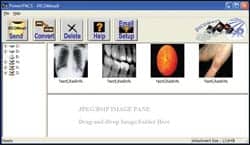 Milan diPierr0 Milan diPierr0 |
In the past, most integration efforts focused on allowing islands of information to exchange data, but this did not provide seamless integration at the desktop. The burden of “integration” was left up to the end-user and consisted of managing separate logins to separate applications on separate workstations often crammed side-by-side. Compliance with new, robust health-information standards is now helping technology suppliers blend the islands of information together, making complete integration possible for their customers. Full desktop integration means that a clinician can call up the electronic medical record of a given patient and then gain access to all relevant information (including laboratory testing results, pharmacy records, pathology reports, radiology reports with current and prior images, past interventions, and future appointments) and tools (including web browsers, voice-recognition transcription systems, and image viewers) from that screen. (An introduction to the benefits of desktop integration is provided by Agfa’s James Herrewynen beginning on page 3.) Integration also means that the radiology department can eliminate the multiple mice and monitors of a non-integrated workstation, saving the cost of that extra equipment and its maintenance by making one monitor serve where there might have been four before. More importantly, it provides a more efficient work flow for the physician through the use of single sign-on and context sharing functionality.
The radiology department of the Medical University of South Carolina, Charleston (see page 7), has long been known for its leadership in pursuit of filmless radiology. Through desktop integration, pursued over the course of the past year, the institution has been able to make its best-of-breed information systems accessible through the electronic patient record. Apparently, improvement and refinement are possible even in pioneering institutions with access to the most advanced information systems.
Sunnybrook & Women’s College Health Sciences Centre, Toronto, (see page 11) already possessed a high-speed network linking four PACS-equipped hospitals on three campuses. Now, it has augmented that level of efficiency by installing a highly customizable form of voice-recognition transcription for radiology reporting at its 32 interpretation workstations. To date, 17 of these installation have been completed; report-turnaround times have decreased dramatically, and radiologists are highly satisfied with the new reporting procedure. The institution is also using electronic signatures for radiology reports, exploring the advantages and implications of this new capability.
On page 15, interaction design consultant David Fore advises readers concerning the analyses that should be undertaken before desktop integration reaches the installation stage. He proposes the use of nine questions to help the institution pinpoint its current situation, its unmet needs, and its best approach to desktop integration. He notes that, while information systems are indispensable in today’s hospital, they are also, too often, inadequate to support its executives, clinicians, radiologists, and patients. Desktop integration can have a profound impact on both speed and accuracy in diagnosis, reporting, collaboration, communication, treatment, and billing. Integration is necessary in most settings, but the process should be directed and those presiding over the project should be fully informed.
The implementation of desktop integration and voice-recognition transcription is not a dramatic undertaking. Nonetheless, these technologies can be highly beneficial because they improve the efficiency of an organization’s major information systems and the productivity of those who use them. By building on PACS, HIS, and RIS capabilities, integration with speech recognition can provide major operational enhancements without incurring major capital costs. This kind of project, by making full use of existing strengths, exemplifies Agfa’s resolve to solve the problems of the health care community using available resources combined with cutting-edge innovations. Agfa is pleased to sponsor the publication of this 20th Intelligence Report as an indication of that commitment.
Milan diPierro
Director of Downstream Marketing
Agfa HealthCare Informatics, Americas
Ridgefield Park, NJ



